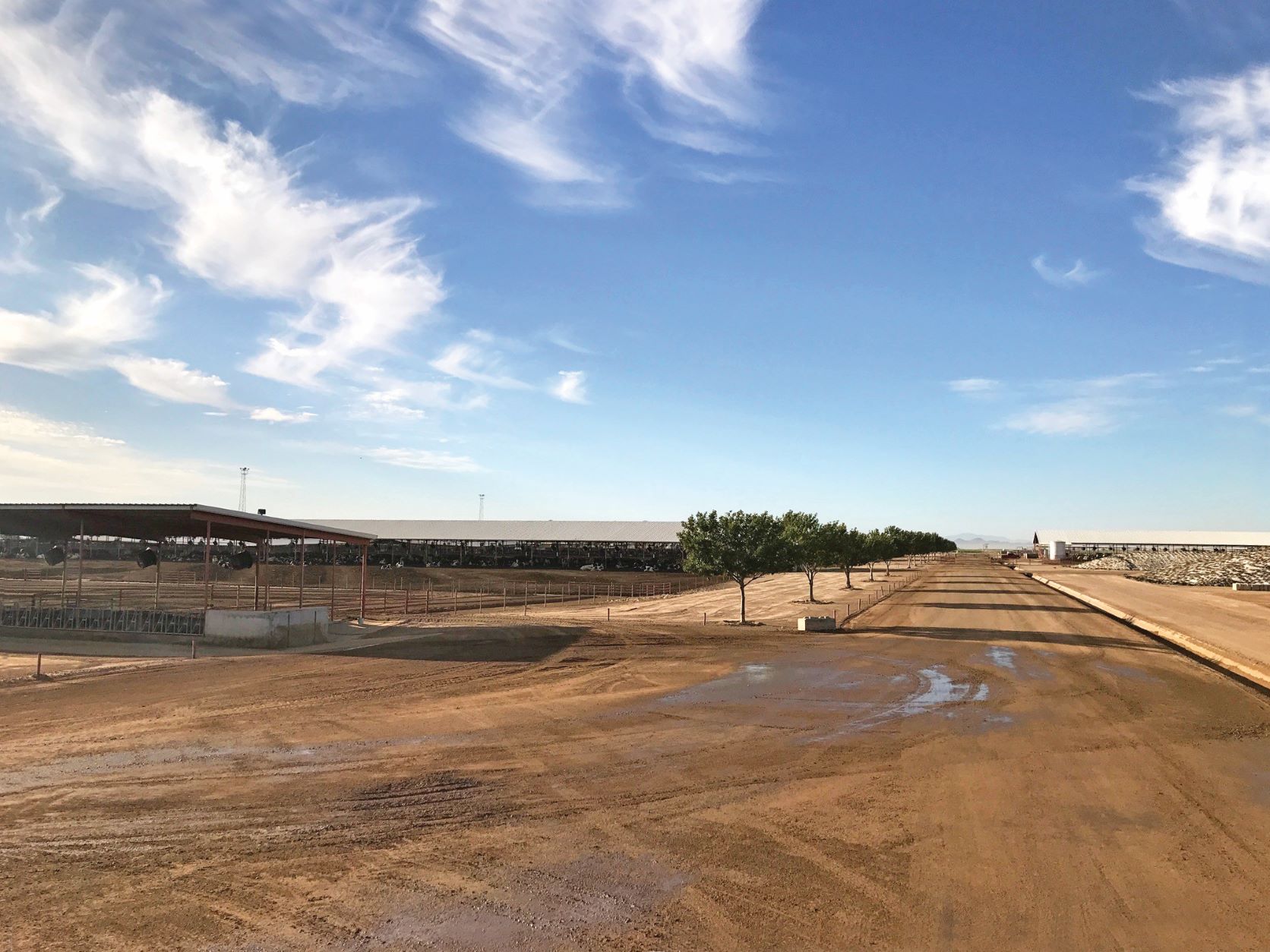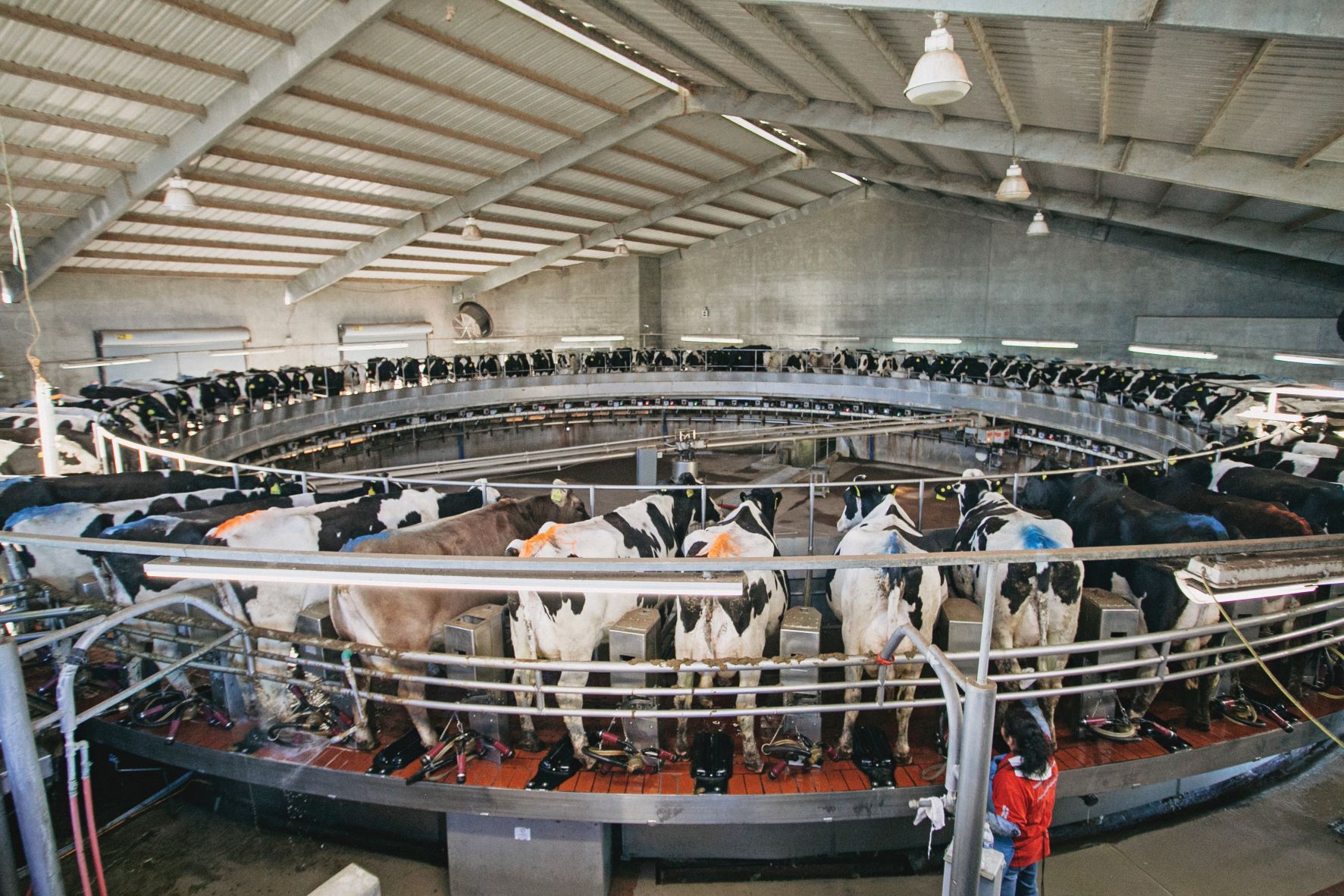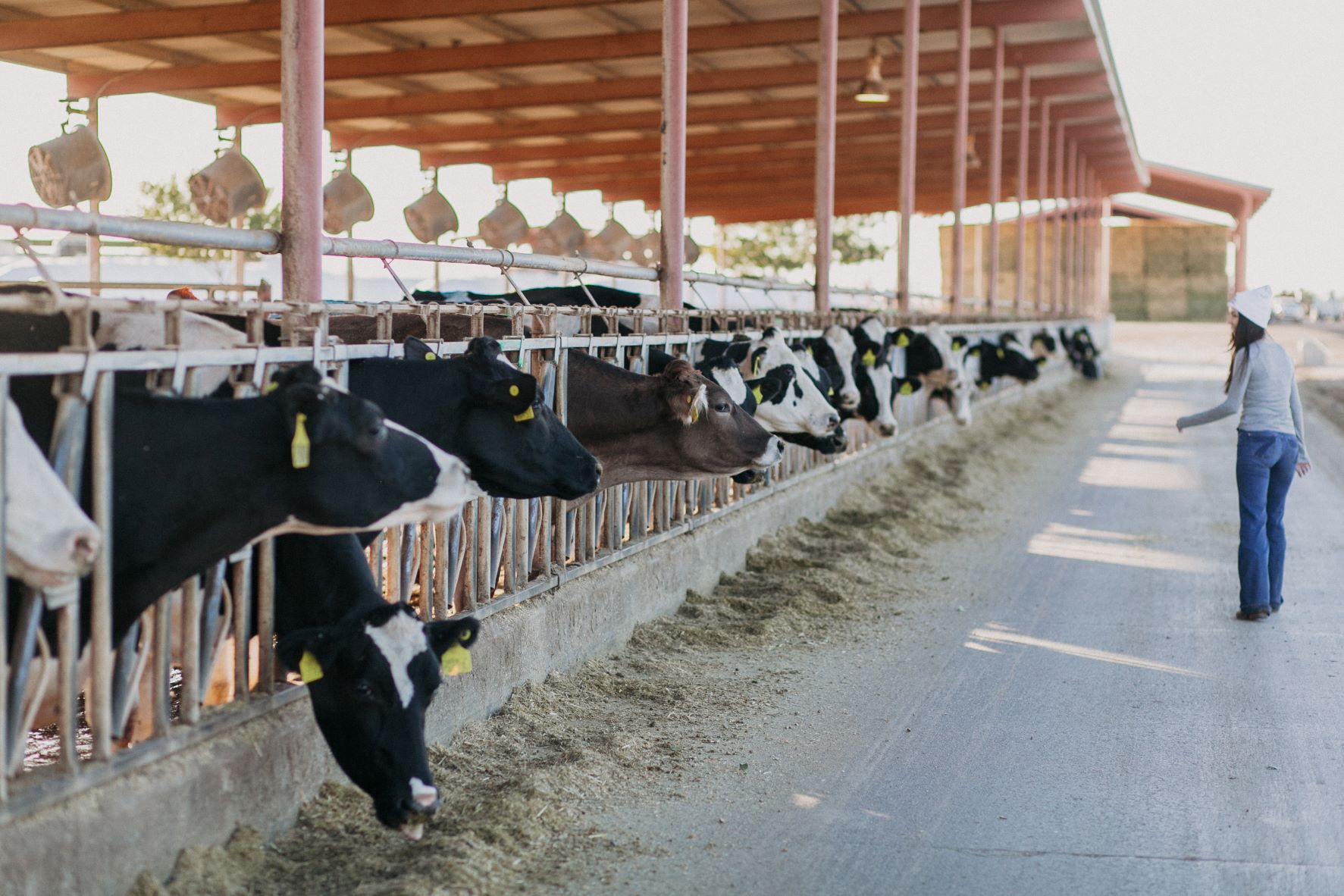Catching the Curveballs

Unaware of what’s coming next, Arizona dairy farmer Craig Caballero always keeps his eyes on the ball — something he learned from his time behind home plate as an MLB catcher in the mid-90s.
“There are thousands of different scenarios that can happen over a single plate,” he says. “As a catcher, you’re trying to predict what’s going to come at you next.”
Early Days
Before putting on his baseball cleats and glove, Caballero worked on his family farm in Gilbert alongside his father, Manuel. Caballero carries deep-rooted lessons and an appreciation for agriculture. His father, who immigrated from Spain when he was 19 years old in 1952, started herding sheep to become a U.S. citizen. Six years later, Manuel started Caballero Dairy Farm.

“I started helping [on the farm] before I can even remember,” Caballero says. “My backyard was the dairy.”
After high school, Caballero headed to Grand Canyon University in Phoenix on a baseball scholarship. He graduated with a business finance degree and signed a contract to play with the Detroit Tigers. After his time playing with the Tigers, and later with the Chicago Cubs, he had many thoughts on his next career choice. Ultimately, his heart brought him back to the family farm.
In 1998, when he returned to Caballero Dairy, the father-son duo milked 900 cows. Over time, they expanded to 1,700, and in 2006, Caballero and his wife, Heather, decided to build their own 3,300 cow dairy in Eloy.
Self-described as competitive, Caballero says that mindset gives him an advantage when working in a volatile industry.
Technology Adoption
Watching the dairy industry evolve at lightning speed, Caballero say producers must be willing to accept and adapt to change. He encourages producers to lean into discussions about adopting technology on their farm, while realizing they can’t modify everything.
“You must know your strengths, your weaknesses and apply them correctly,” Heather says.
Today, the Caballeros milk 5,200 cows in a 72-cow rotary. Mimicking an assembly line, Caballero always knew he would build a rotary because it can be modified later.
In 2015, the Caballero’s implemented a robot to pre- and postdip cows, which helped reduced their workforce by five employees.

“It was a good investment with a good return on investment,” Caballero says.
Most recently the dairy added Nedap sensor collars and conducts all breedings off sort rails.
“Now, our cow management is driven by the cow collars and the information they provide versus walking pens and identifying cows,” Caballero says. “We must trust the technology.”
Caballero admits there is a learning curve when adding technology and recognizes older generations are more likely to resist than younger generations.
“I kind of feel at my age I’m somewhere in between,” he shares. “I’m in no man’s land — not young enough to have grown up with it, so I’m always having to learn.”
Since the operation only recently started using the collars, Caballero is unsure of the true ROI on the investment but confidently says the system can identify things impossible to do with the human eye.
While technology has its place at Caballero Dairy, he also says a producer must surround themselves with good people.
“My father’s generation didn’t have the kind of technology we do today,” he remarks. “They were successful because they knew how to work hard.”
Caballero says managing a dairy now requires a different business model, one that includes hard work as well as numerous other variables.
“There is no cookie-cutter formula for success,” Caballero says.

Capturing Every Drop of Water
Dairying in the Grand Canyon State is not for the faint of heart, and the Caballeros say Arizona dairy producers must do everything they can to preserve water.
“If anyone in the southwest U.S., including Arizona, said the drought didn’t worry them, I think they got their head in the sand,” Heather says. “It’s definitely concerning.”
The Caballeros are counting down the days until their dairy’s manure digester is operational later this summer. One of the many reasons they leaned forward with the decision to put in a digester was to help reduce the dairy’s fertilizer costs, which they expect will be a substantial savings.
“We can better capture the nutrients coming off the digester,” Caballero says. “Plus save on our fertilizer bill.”
In addition to adding a digester on the farm, Caballero says he is looking at different hybrids to grow drought resistant forages.
“Water is the next biggest challenge we must address in the industry,” Heather says. “We will be forced to use a lot of products that weren’t previously around.”
Reevaluating the ideal time to plant crops is up for discussion at his dairy, Caballero says.
“In Arizona you can still grow things in winter months,” he says. “We must look at every single angle. Arizona water has always been monitored heavily. The fact we’re in a drought, isn’t new for us.”
Equal Opportunities
While labor is an issue across the country, Caballero says he doesn’t know any place more difficult in terms of labor than Arizona.
“The shortage of labor for us is caused by the workforce demand in construction,” he says.
Caballero says it’s not even about finding the help, even if you want to pour concrete, you have a long wait due to the high demand.

“You’re probably looking at an eight to 12-week lead time,” he says.
Milk prices between $23 and $25 is a nice change of pace for the Caballeros, but they say it’s
not spectacular.
“The fact of the matter is inputs have gone up threefold and milk has not,” Caballero says.
In 2007, Caballero began using a risk management plan and says he could not imagine dairying without it, especially with all the volatility right now.
“With the volatility we have seen both in our price of milk and with our inputs, it would be much more difficult to manage without using some type of risk management plan,” Caballero says.
Where there are challenges, he says, there often are opportunities.
“Arizona’s growing population proves there are a lot of people to feed in a very short distance,” he says. “So, we must figure out how to manage that.”
Looking Ahead
The Caballeros continue to keep their eyes wide open for the next opportunity. Their last expansion was in 2020, and with the rising interest rates, Caballero is currently working on paying down debt.
“The current inflation rate does not generate an appetite for me to build,” he says. “With the cost to build being so crazy, it isn’t exactly where I want to put my next dollar.”
The self-motivated dairy farmer says the reason why he straps on his boots and heads to the dairy early every morning is simply because he has people who depend on him.
The Caballero’s three children — Anika, Joseph and Ethan — show interest in coming back to the farm, but Caballero doesn’t push for it. He says the reason he loves the industry so much is that he was never forced to be in it.
“Yes, I would absolutely support any of my children who want to be part of the dairy or the dairy industry,” he says, “but that needs to be their choice. Whatever their choices are, I will support them.”
Heather was not raised on a farm and says she has a deeper appreciation for what a dairy farm provides to her family.
“Having the opportunity to raise my children with an agricultural experience on a farm is a blessing in more ways than one,” Heather says. “I pray they see their last name not as a sense of entitlement, but as a name deserving of trust and respect; earned by hard work and loyalty by their father.”
The Caballeros are excited about the future of the dairy industry, although they continue to keep their eyes on the ball to stay ahead of the constant challenges thrown at the industry.







